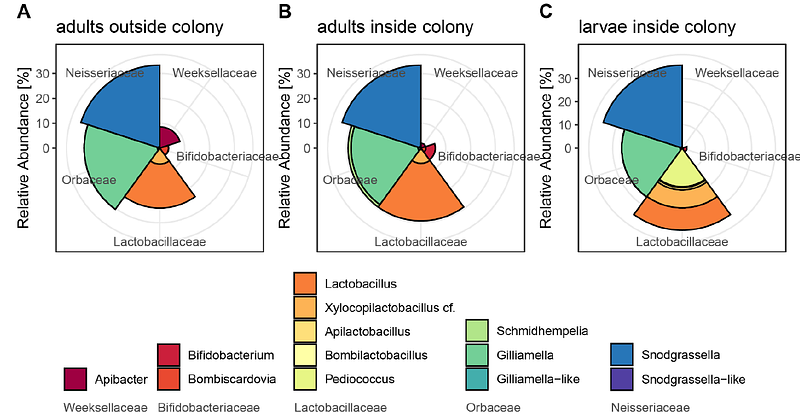Bumble bee microbiota shows temporal succession and increase of lactic acid bacteria when exposed to outdoor environments

Bumble bee microbiota shows temporal succession and increase of lactic acid bacteria when exposed to outdoor environments
Weinhold, A.; Grüner, E.; Keller, A.
AbstractQuestion: The large earth bumble bee (Bombus terrestris) maintains a social core gut-microbiota, similar as known from the honey bee, which plays an important role for host health and resistance. Experiments under laboratory conditions with commercial hives are limited to these vertically transmitted microbes and neglect variability by environmental influences and external acquisition of microbes. Various environmental and landscape-level factors may have an impact on the gut-microbiota of pollinating insects, with consequences for pollinator health and fitness in agroecosystems. Still, it is not fully clear whether access to a higher vs lower flower diversity will have a significant influence on the bumble bee microbiota. Here, we tested in a semi-field experiment how strongly the bumble bee microbiota changes over time when exposed to different flower diversities within outdoor flight cages. We used commercial hives to distinguish between vertically and horizontally transmitted bacteria, respectively from the nest environment or the exposed outside environment. Result: The sequential sampling of foraging workers over a period of 35 days indicated a temporal progression of the bumble bee microbiota when exposed to outside conditions. The microbiota became not only more diverse, but changed in composition and variability over time. We observed a major increase in relative abundance of the families Lactobacillaceae, Bifidobacteriaceae and Weeksellaceae. In contrast, major core taxa like Snodgrassella and Gilliamella declined in their relative abundance over time. The genus Lactobacillus showed a high diversity and strain specific turnover, so that only specific ASVs showed an increase over time, while others had a more erratic occurrence pattern. Exposure to different flower diversities had no significant influence on the bumble bee microbiota. Conclusion: The bumble bee microbiota showed a dynamic temporal progression with distinct compositional changes and diversification over time. The exposure of bumble bees to environmental conditions, or environmental microbes, increases dissimilarity and changes the gut-community composition compared to laboratory rearing conditions. This shows the importance of environmental influences on the temporal dynamic and progression of the bumble bee microbiota.